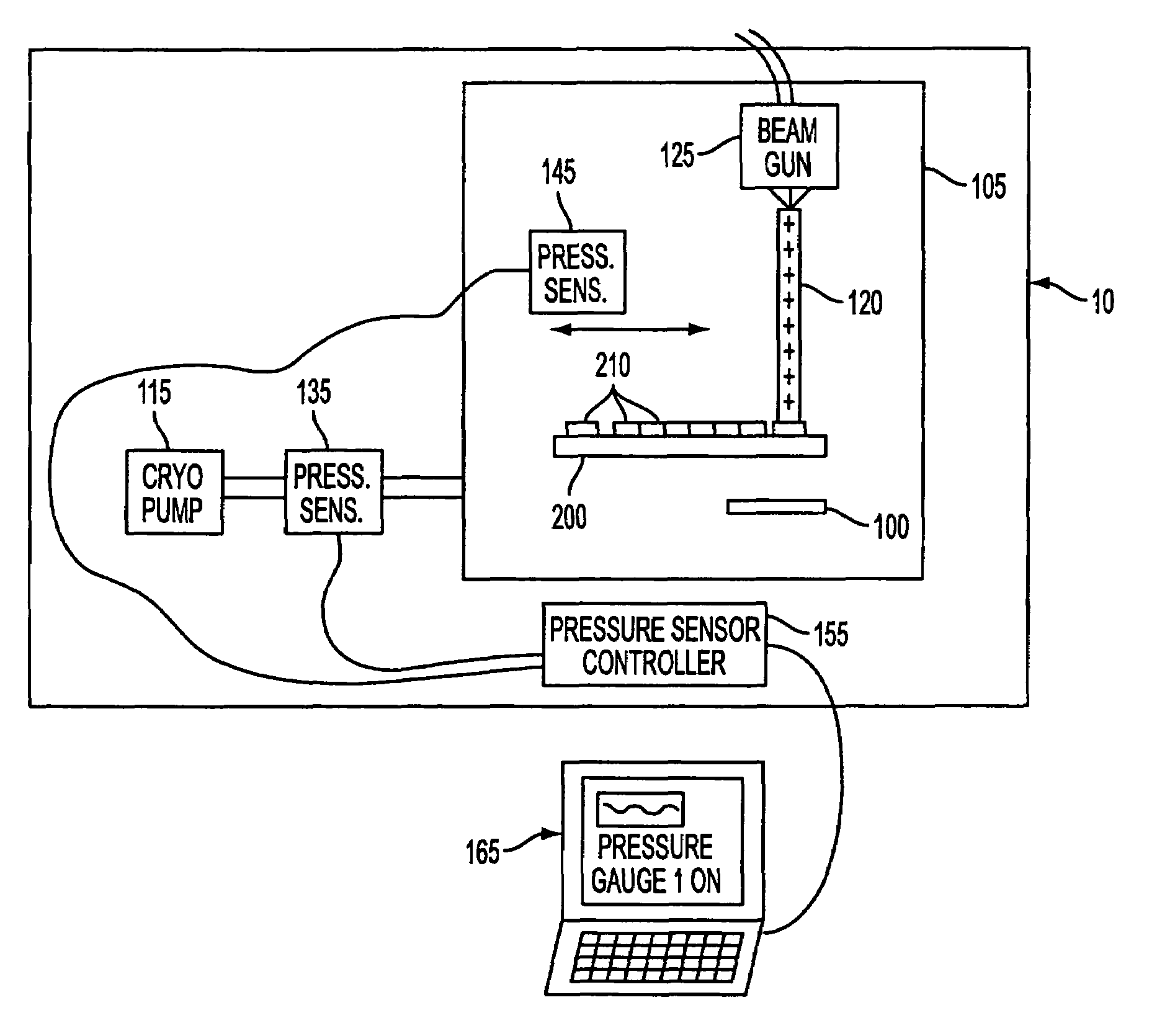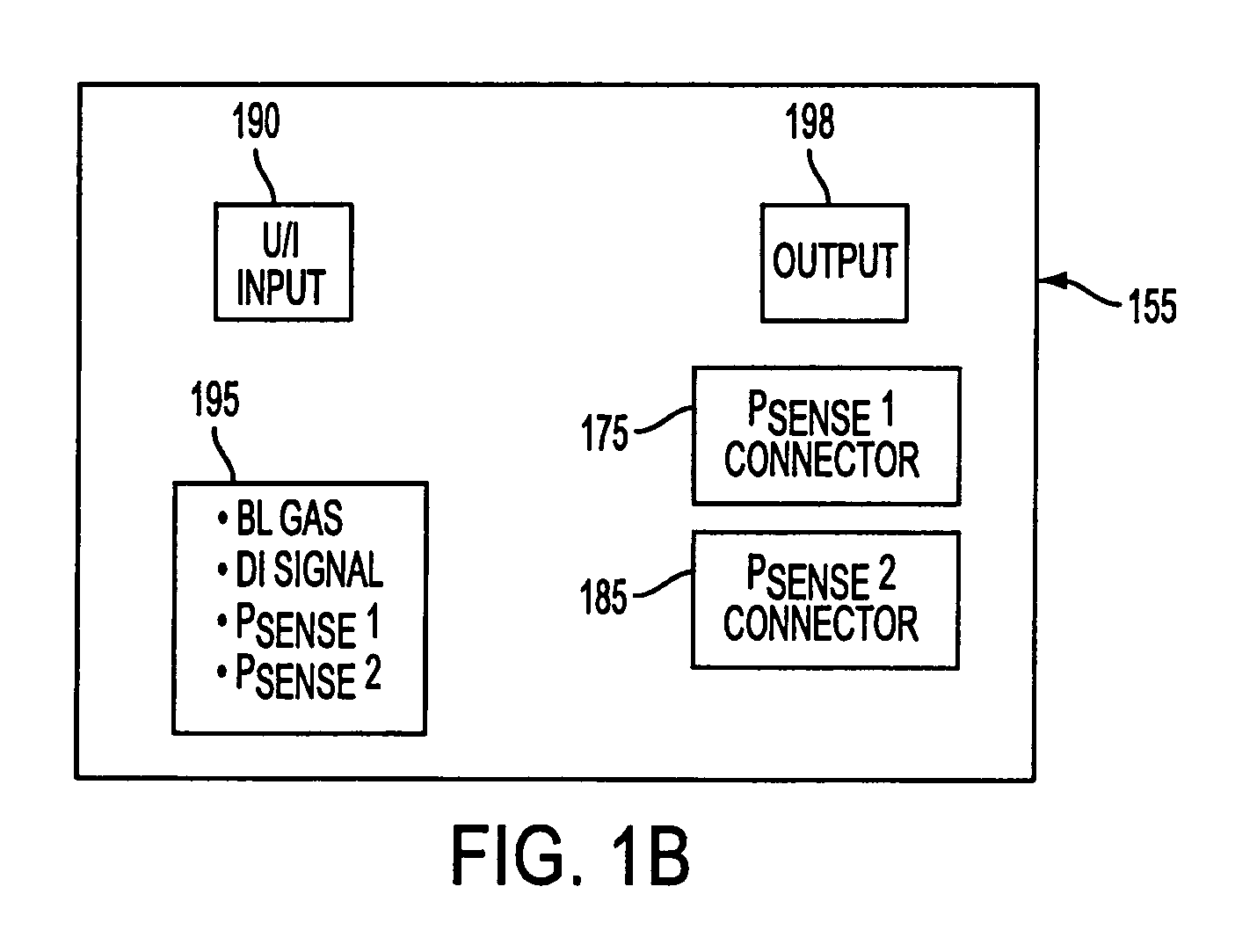Utilization of an ion gauge in the process chamber of a semiconductor ion implanter
a technology process chambers, which is applied in the field of ion gauges in the process chamber of semiconductor ion implants, can solve the problems of reducing the accuracy of pressure readings, destroying a portion of a resist layer formed on the wafer, and not being able to accurately count the number of ions (or atoms) leaving the ion gun
- Summary
- Abstract
- Description
- Claims
- Application Information
AI Technical Summary
Problems solved by technology
Method used
Image
Examples
Embodiment Construction
[0034]Reference will now be made in detail to the preferred embodiments of the present invention, examples of which are illustrated in the accompanying drawings, wherein like reference numerals refer to like elements throughout.
[0035]FIG. 1A is a schematic side view of an ion implanter 10. The implanter may be an Axcelis GSD™ platform implanter. The implanter has a chamber 105, which is kept at a very low pressure by cryo pumps, one of which is represented by reference numeral 115. Within the chamber 105, a beam gun 125 produces an ion beam 120 which is focused on wafers 210. The wafers 210 are placed around a disk 200. A faraday 100 is provided under the disk 200 to sense beam current. A first pressure sensor 135 is provided outside of the chamber 105 in the vicinity of the cryo pump 115. This location corresponds with a conventional location and is useful for implanting ions that produce a large pressure response during resist outgassing. A second pressure sensor 145 is provided w...
PUM
 Login to View More
Login to View More Abstract
Description
Claims
Application Information
 Login to View More
Login to View More - R&D
- Intellectual Property
- Life Sciences
- Materials
- Tech Scout
- Unparalleled Data Quality
- Higher Quality Content
- 60% Fewer Hallucinations
Browse by: Latest US Patents, China's latest patents, Technical Efficacy Thesaurus, Application Domain, Technology Topic, Popular Technical Reports.
© 2025 PatSnap. All rights reserved.Legal|Privacy policy|Modern Slavery Act Transparency Statement|Sitemap|About US| Contact US: help@patsnap.com



